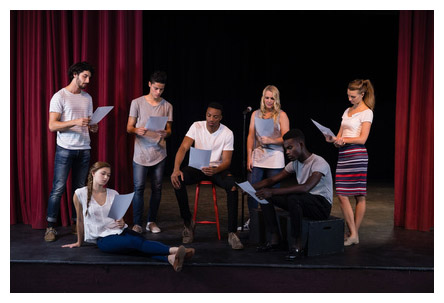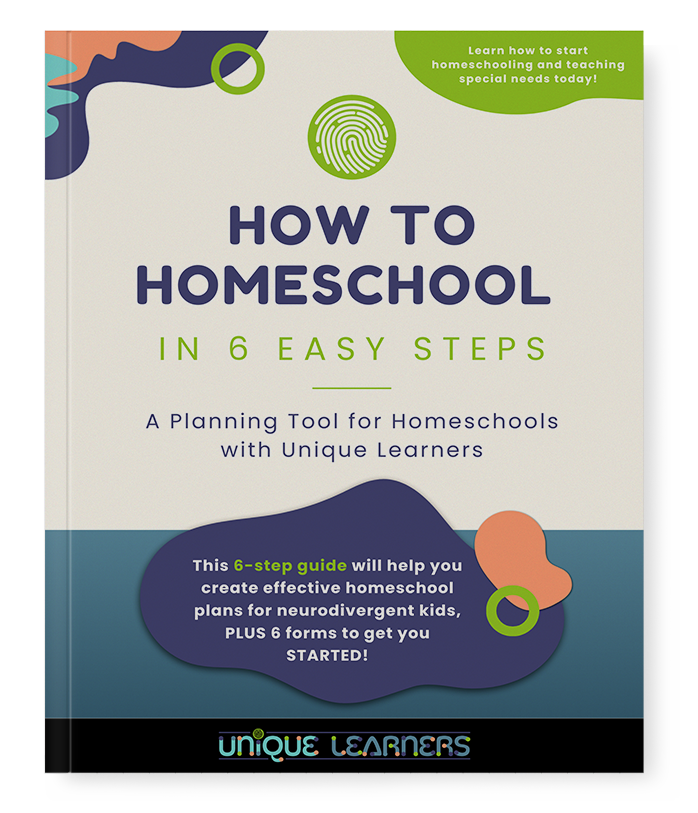Learning to read is a process that goes far beyond decoding or sounding out CVC words. It goes way beyond systematic phonics or developing sight word vocabulary. A comprehensive reading program involves the following stages:
- learning to decode,
- recalling words quickly from memory,
- reading smoothly with expression,
- reading fluently with increasing speed,
- transitioning to silent reading,
- understanding figurative language,
- fiction reading comprehension,
- and nonfiction reading comprehension.

Today I want to talk about how you can move from beginning reading skills to help your child read fluently. I have 8 common strategies I use. Each of these strategies has a more intense approach for students who need even more guidance from sounding out each and every word to gaining some smoothness. For most students a combination of several strategies will be enough to get them reading independently in a short amount of time.
1. Read aloud to your child daily.
Yes, I know that is recommended all the time. You read to your children, but their reading is still choppy. Do it anyway. Read to your kids until they graduate from high school.
The emotional bonding helps kids who are struggling in reading to enjoy age-appropriate books that are beyond their current reading level. The language stimulates higher levels of vocabulary.

Stop occasionally to discuss a literary element or device. Or have a discussion about the plot at the end of each chapter. Try not to make a formal lesson from read aloud books. No vocab or comprehension worksheets. Those are for classroom teachers who need to track the progress of many students. In a homeschool or tutoring situation, oral discussion, or in Charlotte Mason terms – narration, is more valuable in finding out what your child is understanding from the book.
Plus, you are modeling how to read fluently with expression and what happens when your eyes blur or your brain is tired. You may not think that reading aloud together is actually beneficial, but it is extremely important in modeling for kids how reading happens.
2. Guided Reading or Echo Reading
Guided Reading, also called Echo Reading, takes advantage of hearing a model first. Auditory memory is trained and strengthened with this fluency-building technic. The teacher reads a short passage first. Decide ahead of time how far you will read before stopping. Select a passage length that is slightly longer than the student can recite verbatim, yet short enough that the student will be able to recall the meaning of the passage. The intent is to keep the student’s speed a bit faster than the student will read without assistance and to eliminate stopping to sound out common words when a student is in the habit of utilizing segmenting and blending on words that have become part of their sight word vocabulary.
After the teacher reads the short passage, you may decide to read the passage again up to 5 times. I typically read a paragraph or short story 3 times.
Then have the student orally read back the same paragraph or story.
Repeat the process until the student makes fewer than 5 errors or stops more than 5 times to sound out words.
3. Choral Reading (Neurological Impress Method)
This method has been used for many decades and is still effective for many kids who are working on reading faster and smoothly. If a student tends to lose their place, either use a reading window or a 3×5 index card or finger to follow along while reading.
Read aloud together at the same time. If possible sit beside the child on the side of their dominant ear (typically on the right side).
Set the pace just slightly faster than the student reads without assistance. If the student makes a mistake, the correction happens at the neurological brain level. If the student makes more than 5 mistakes, stop and practice that section again.
When a student loses their place, stop briefly, point to where you are in the passage, and start from where you left off. If the student loses their place frequently, you may want to use a different strategy until tracking has been practiced a bit more.
4. Readers’ Theater
Readers’ Theater plays are fun to try. It helps a student visually “attend to print” because each person takes turns. Readers’ Theater does not require memorization; however, it does encourage multiple readings for practice. You will want to practice reading the play until everyone is able to make the dialogue flow smoothly with expression.

Even in a homeschool, you can find a small audience to “perform” your play, like grandparents, friends, neighbors, other homeschool families. If you are part of a homeschool group, you could invite other homeschool families to do a Readers’ Theater and perform short plays for each other.
If any families have young children who are not yet readers, include them anxiety, practice enough that their lines are over-learned. The main way to get over fear of public speaking is to start young and do it often.
When our kids were young, we performed The Enormous Turnip by memorizing single lines and performing the actions together. As the kids got older, we performed Mrs. Wishy-Washy as a reader’s theather, as well as other short plays we found in reading books. As the kids were able to write independently, they started writing their own skits and making videos of themselves acting out their own works. So much fun doing reading and language arts!
5. Repeated Reading
Kids become more confident when they are very familiar with something. Most kids don’t like a song until they’ve heard it at least 10 times, and then it is their favorite! So, setting up the Repeated Reading strategy at the beginning of the year or after a break, that you will be practicing the same story over the course of 3 to 5 days will help take off the idea that repeated reading is because they aren’t perfect. The goal of repeating the same story for several days is to increase fluency, not to read more accurately or to improve comprehension – although that is likely to happen anyway. If you set up that all stories will be read 3 days, then don’t short-cut and read only one day even if your kiddo read the passage well. The whole point is to practice. If your child is already reading smoothly with expression, then you may want to move to one of the other strategies or add in a transition to silent reading strategy.

If you have set up the Repeated Reading strategy, you can also use it to help your child transition to silent reading. Many kids who have experienced difficulties in learning to read also have struggles in jumping the hurdle to silent reading. The Repeated Reading strategy can help with this transition. The first 2-3 days can be oral reading. Then do 1 to 2 days of silent reading of the same passage. Of course, you can have your child narrate or discuss the comprehension points of the passage between readings.
6. Chunking Phrases
Chunking is a way to help kids use their visual systems to read groups of words rather than groups of letters. Some teachers call this technique “Scooping.” You can use a pencil to draw scoops under short phrases or groups of words. Have the student use an index finger to scoop under the phrases and make the eyes follow the finger. Then model how to read in phrases.
When kids first start this strategy, it often sounds as if you are trading in choppy decoding for choppy scooping. But after a bit of practice, the child’s eyes are trained to recognize the subject of a sentence, a verb phrase, and prepositional phrases. You can even tie the scooping strategy into sentence writing by explicitly explaining that those are the parts of speech and phrases you want to scoop when reading.
As an older student becomes more proficient at reading groups of words, you can use this same strategy to train the eyes to follow speed reading tracking patterns and increase the reading rate to speed reading. Even students with reading disabilities, who may not reach the extreme rates of neurotypical speed readers, can still be trained through chunking to gain fluency to average rates of reading.
7. Timed Readings
Several programs have been developed that embed Curriculum-Based Measures into an instructional strategy based on timed readings. The process usually involves stories that have numbers down one of the margins on a page of text. You can use any story or text that you like, even passages without the numbered words. You will just have to count the words yourself.
The student first does a “cold” oral reading of a passage that has not been rehearsed. This cold reading is often used in Response To Intervention (RTI) by reading specialists in school. This is one of the measures that can be used on an Individual Learning Plan for your homeschool that will help you see if your child has improved in reading fluency.
After the initial cold reading, the student listens to the same passage multiple times. I require three times minimum. Typically, students can pass a story from listening to the passage 3 to 5 times.
Then have the child do a “hot” timing. That means the passage is read aloud by the student to pass a goal that you have set that is a bit above where the current reading rate is. For example, if your child reads at about 55 words per minute (55 wpm), then set the goal for around 70 wpm. If you set the goal too low, the criteria is passed too easily.
If you set the goal too high, it will be discouraging rather than motivating. I often see kids whose teachers have incorrectly implemented the Timed Readings strategy, and they freak out to have their reading rate timed. If this is the case, a watch with a second-hand sweep or a silent timer can be started at any time in the passage so that you can check a reading rate while the student is orally reading the whole passage. Then count the words.
Giving a sense of racing and pressure to pass a story when the goal is too high can be extremely defeating and anxiety producing. I rarely recommend this strategy unless a parent or teacher has a firm grasp on how to use this strategy and build confidence rather than initiate a melt down!! If you think you may want to use this strategy, you may want to contact Sue to be sure it makes a child enthusiastic and feeling successful!
8. Buddy Reading
Buddy Reading is simply having a child practice reading without an adult involved in correcting mistakes. This strategy is best used for a kid who needs independent practice on a story already learned. The “buddy” can be a variety of listeners, like a younger sibling, stuffed animals, or pets. If the buddy is a friend who is reading at a similar level, the buddies can take turns where one reads a page and the friend reads the next page.

If you have an only child, you can get creative in finding a reading buddy. If you have a karaoke machine in your home, it could be fun to have your child read into the microphone as a reward for reading smoothly. Or use Google speech-to-text or your smart phone to record your kiddo reading. Play it back in a day or two so your kid can hear their own voice! Many kids are fascinated to hear their own voice as others hear them.
Practice, practice, practice.
As with any skill, like playing an instrument or dribbling a basketball, reading takes lots of practice. The more words you can get your child to read, the more they will be willing to practice. For kids who struggle with reading, it is absolutely fine to have them read the same passage for practice until they can read it smoothly. If the practice goes beyond a 5-day school week, you may have the level too hard to practice fluent reading. You don’t need to announce a level every time you present a new book. It helps if you select 3 possible books or passages and give your student a choice. That way you have controlled the reading level, and the kid has controlled what they will read based on their interests.

The main things to keep in mind for building reading fluency are:
- Keep reading.
- Make the practice effective and not frustrating. Start a bit below where your regular reading instruction level is.
- Get to the point where your child reads a story fluently and independently. Don’t hurry and move up a level too fast. Give time to learn to enjoy a comfortable level.
- Make the practice FUN!

